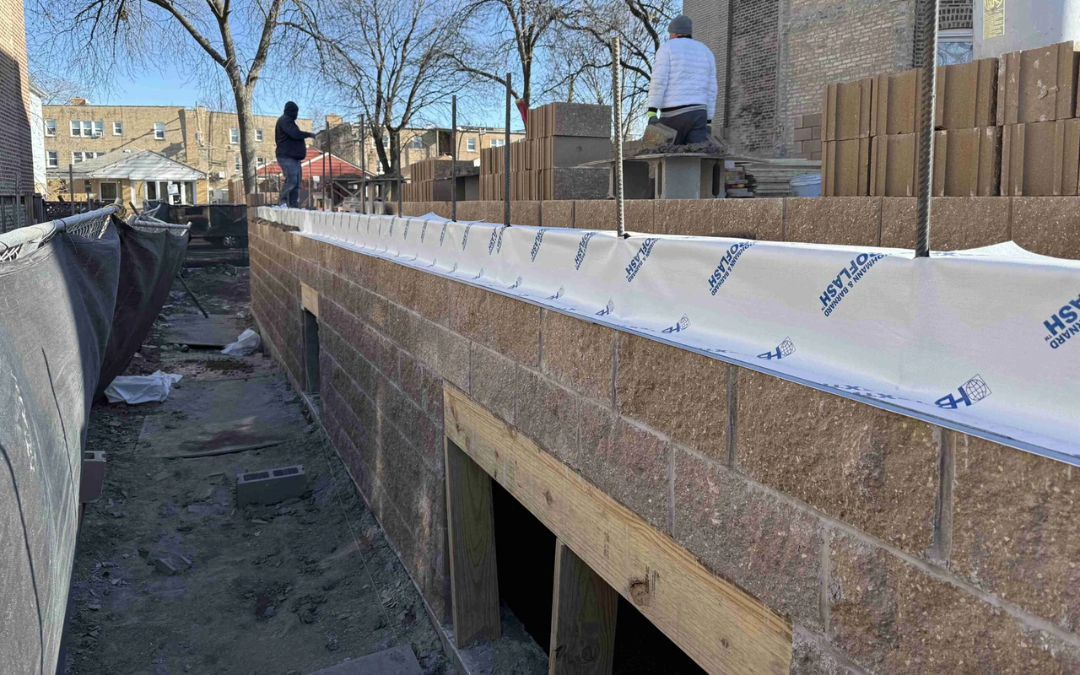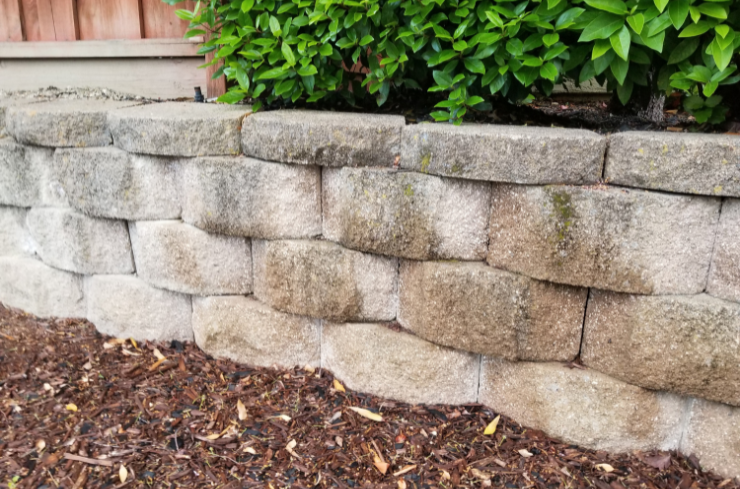Why You Shouldn’t Ignore That Leaning Retaining Wall

What Should You Do If You Notice a Leaning Retaining Wall?
Are you a homeowner who’s noticed your retaining wall starting to lean a little? Maybe you saw it while walking the dog or watering your plants, and thought, “Huh, that’s strange.” It’s not falling over. It’s not crumbling. It’s just slightly off. Easy to ignore, right? But here’s the thing—those small signs often point to bigger problems waiting to happen. That little tilt might not look serious now, but over time, it can cause damage that’s expensive to fix and even dangerous in the long run.
Did you know a leaning retaining wall could mean there’s water pressure, shifting soil, or even poor construction hiding behind it? These walls are built to hold back dirt and protect your yard, but when they start to move, something’s not working the way it should. On this blog, we’re going to walk through why retaining walls lean, what causes it, and most importantly, why you shouldn’t wait to deal with it. Don’t worry—we’ll keep it simple, clear, and helpful so you know exactly what to watch for and what steps to take next.
What is a Retaining Wall?
A retaining wall is a structure that helps hold back soil, especially if your yard has a slope or uneven ground. It keeps everything in place and helps create level areas for things like patios, driveways, garden beds, or walkways. You’ll often see them along hillsides or anywhere the land needs a little extra support. Retaining walls also help prevent erosion and control water runoff, making your outdoor space safer and easier to maintain. But like anything exposed to the weather year-round, they can wear down over time—and when they start to lean, it’s usually a sign that something underneath needs attention.
What Causes a Retaining Wall to Lean?
A leaning wall is not just a fluke. It’s a sign that something’s gone sideways, and if it’s ignored, it can eventually collapse. Here are the most common reasons walls start to tilt:
- Poor Drainage: Water is sneaky. When there’s no proper way for it to escape behind the wall, it builds up—adding a ridiculous amount of pressure. Over time, that pressure can push the wall outward. If your wall doesn’t have weep holes or a drainage system, it’s just a matter of time before it starts giving in.
- Soil Pressure or Erosion: The soil behind your wall isn’t just sitting there politely. It shifts. It moves with rain, freeze-thaw cycles, and even tree roots. Over time, that movement can exert major pressure on the wall. And if erosion eats away at the base? It’s like pulling the rug out from underneath.
- Improper Construction: Here’s where shortcuts come back to bite. If the wall wasn’t built with the right footing, proper reinforcement, or correct materials for the job, it won’t stand the test of time. Sadly, this is a common cause of failure—especially in DIY or low-budget builds.
- Age and Weathering: Nothing lasts forever, especially when it battles sun, rain, snow, and shifting seasons year after year. Older retaining walls can deteriorate, crack, and start leaning simply due to wear and tear. Time takes its toll.
Why You Shouldn’t Ignore It
It’s easy to put off fixing something that doesn’t look like a big deal. But trust me, a leaning wall is not something you want to ignore. Here’s why:
1. Collapse
Let’s be honest. If your retaining wall is already leaning, that means it’s under pressure and starting to fail. It might not fall over today or tomorrow, but every rainstorm, every winter freeze, every shift in the soil behind it adds more strain. Eventually, something’s going to give. When that happens, you’re looking at more than just a few bricks out of place. The entire wall could collapse in one big mess. And it’s not just about cleaning up dirt. A falling wall can damage anything nearby, like your patio, driveway, shed, fencing, or even part of your home. It can also be a serious safety risk for kids playing outside, pets, or even guests walking through your yard. The scariest part is that it often happens suddenly and without much warning. That’s why it’s so important to act early when you first notice the wall starting to lean. A small repair now can prevent a much bigger disaster down the line.
2. Water Runoff Issues
One of the biggest jobs a retaining wall has is helping manage water flow. It keeps rainwater moving away from your home and yard so everything stays dry and stable. But when a wall starts to lean or shift, it can’t do that job properly anymore. Water starts pooling in areas where it shouldn’t, and over time, that can create some serious problems. You might see puddles near your home, soggy spots in your yard, or water flowing toward your foundation instead of away from it. In worse cases, water can seep into your basement or crawl space, leading to mold, mildew, and even structural damage. And once water finds its way in, it usually keeps coming back. That constant moisture can ruin insulation, flooring, and walls on the inside of your home, and it’s not always easy or cheap to fix. A leaning wall might not seem like a big deal at first, but it could be the start of a water problem that only gets worse with time.
3. Decreased Property Value
Let’s face it, curb appeal matters. When someone drives past your house or walks through your yard, the first things they notice are the little details—like whether things are neat, well-maintained, and in good shape. A leaning retaining wall sticks out like a sore thumb. Even if the rest of your home is in great shape, that one wall can make the whole property feel less taken care of. If you ever plan to sell your home, potential buyers will notice that damage right away. Some might see it as a red flag and walk away completely. Others might still be interested but expect a discount because they know they’ll have to spend money fixing it. Either way, it can seriously hurt your home’s value. And even if you’re not planning to move anytime soon, it’s still something that takes away from the overall look and safety of your yard. Keeping your wall in good condition helps your whole property look better and feel more secure.
4. Costly Repairs Down the Road
The thing about retaining walls is that they don’t get better with time. A small lean or crack might not seem urgent, but if you leave it alone, it will get worse. The longer you wait, the more the soil shifts, the more water builds up behind the wall, and the weaker the structure becomes. What could’ve been a small fix now turns into a much bigger job. You might go from needing a simple reinforcement or drainage fix to having to tear down the entire wall and rebuild it from the ground up. That means more time, more labor, more materials, and a much higher cost. And let’s not forget the inconvenience of having a big construction project happening in your yard. Your outdoor space becomes a work zone, and you’re stuck waiting longer to enjoy it again. On the other hand, if you take care of the issue early, you can often avoid all that. A professional can spot what’s wrong, make a quick repair, and save you a whole lot of money and stress in the long run.
What Should You Do?
You don’t need to panic, but don’t wait around either. Here’s a simple plan.
- Step 1 – Keep an Eye on It: Take a picture of the wall and check back in a few weeks. If it looks like it’s leaning more, that’s a sign things are getting worse.
- Step 2 – Call a Pro: Get a professional to take a look. They’ll be able to tell you what’s going on and whether you need a repair or a full replacement. They can also check the drainage and see what caused the lean in the first place.
- Step 3 – Fix It Before It Gets Worse: The sooner you take care of it, the better. Even if it feels like a small issue now, getting ahead of it can save you a lot of stress (and cash) later.
A leaning retaining wall might not seem like a big deal right now, but it’s really a sign that something isn’t working the way it should. Maybe it’s water building up behind it, soil shifting around, or just the wall getting old and worn out. Whatever the reason, it’s not something you want to ignore. The longer you wait, the worse it can get, and that means more stress and more money to fix it later. Taking care of it early can save you a lot of trouble and help keep your yard safe, clean, and looking great. So if you’ve spotted a wall starting to lean, don’t put it off. Have someone take a look, figure out what’s going on, and get it handled before it turns into a bigger problem. It’s one of those small steps now that can make a big difference later.
Not sure what to do about that leaning wall? Reach out to Pyramid Pro Masonry Services. We’re your local masonry contractor, and we know how to fix it before it turns into a bigger problem. Let’s take a look and make sure everything’s safe and solid. It’s always better to catch it early.


0 Comments